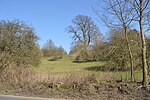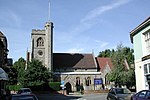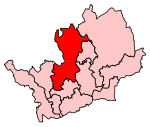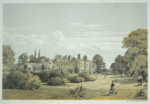Singlers Marsh
Local Nature Reserves in HertfordshireWelwyn

Singlers Marsh is a 6.3 hectare Local Nature Reserve in Welwyn in Hertfordshire It is owned and managed by Welwyn Hatfield Borough Council.The site is bordered by the River Mimram. It has grassland, which is managed by cattle grazing and cutting, and areas of willow scrub with some more mature trees. It provides a habitat for a wide range of insects and birds.There is access by a kissing gate at the corner of Codicote Road and Fulling Mill Lane.
Excerpt from the Wikipedia article Singlers Marsh (License: CC BY-SA 3.0, Authors, Images).Singlers Marsh
Fulling Mill Lane, North Hertfordshire
Geographical coordinates (GPS) Address Nearby Places Show on map
Geographical coordinates (GPS)
| Latitude | Longitude |
|---|---|
| N 51.8354 ° | E -0.2206 ° |
Address
Fulling Mill Lane (Fullingmill Lane)
Fulling Mill Lane
AL6 9NP North Hertfordshire
England, United Kingdom
Open on Google Maps





